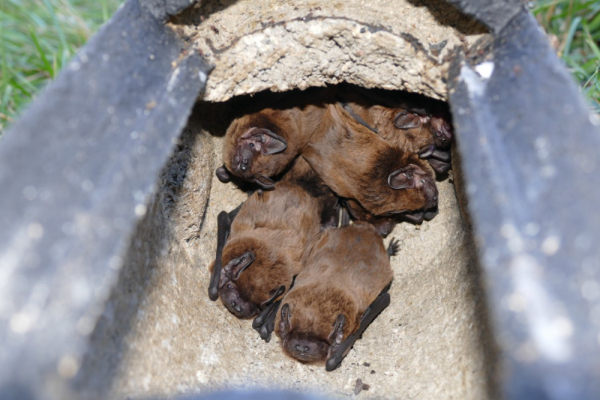SECEMU: A UAH association for bat care
UAH welcomes the SECEMU association in its facilities, which is responsible for investigating and disseminating the reality of bats to the general population, so that these animals are more appreciated and therefore respected.
SECEMU, Spanish Association for the Conservation and Study of Bats, and its secretariat is located in the Department of Life Sciences of Universidad de Alcalá. Its field is national and has about 150 partners, many of them are people working in the conservation of bat populations and their study.
UAH, apart from collaborating with its facilities, has also funded some research and outreach projects on these mammals. 'Currently, some of the partners with links at the UAH carry out various research projects', says Óscar de Paz, doctor in biological sciences, member of SECEMU and honorary professor in the UAH´s Department of Life Sciences, and Juan Tomás Mayor, Doctor of Life Sciences and President of SECEMU.In Spain there are 34 species of bats. The most frequent and abundant are the species included in the genre Pipistrellus. Some of them are present in urban settings, so they are distributed almost throughout the country.
 |
| Oscar de Paz, member of SECEMU, placing bat shelters |
As Peace and Mayor tell 'these animals are protected by law, and it is an obligation to keep them, so members of SECEMU collaborate in the protection of some shelters such as the closure of caves, mines or constructions where important populations of these mammals live. We also place shelter boxes for tree species in areas with a shortage of natural shelters. On the other hand, we carry out working protocols and Environmental Impact Studies on infrastructures that pose a danger to chiropters, such as wind farms. Finally, we develop informative and educational actions (batnights) aimed at spreading the reality of these animals among the general population, so that these animals are more appreciated and consequently respected. On the Association's website we are showing the news that may be of interest and relate to these animals, such as the current pandemic'.
Its role is very beneficial for the good maintenance of the ecosystem. All European species are insectivorous, so they act as regulators of insect levels in all ecosystems and play a very important role in pest regulation. Some of these prey insects can transmit diseases to humans, so bats can also play a relevant role in reducing their transmission. Diseases that cause a high mortality, such as malaria, have a lower impact on human populations due to the voracity of many species of bats that feed on blood-sucking mosquitoes
In other parts of the world, some fruit-eating bats contribute to the dispersal and repopulation of trees, as their droppings carry the seeds over long distances. This occurs, for example, in rainforests, because trees whose fruits are eaten by bats are the first to repopulate the felled areas.
Other species feed on pollen (for example, of saguaros, agaves, baobabs) and thanks to it they pollinate the flowers of many species of trees and cactus that then serve as food or shelter for wildlife and even human interests. Tequila, bananas or durian are some of the products obtained from tree-pollinated plants.
Bats have always been highly stigmatized. They are animals that have traditionally suffered undeserved stigmatization, both in audiovisual media and in popular tradition. From SECEMU try to change this bad fame by providing evidence of their true role in the natural environment.
Publicado en: Inglés
